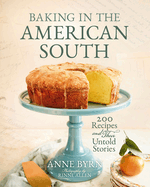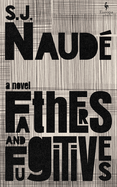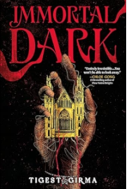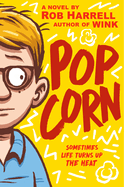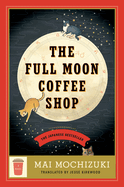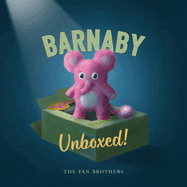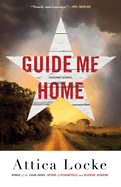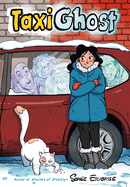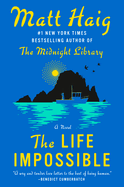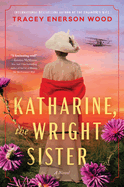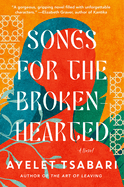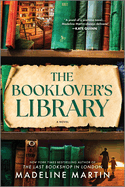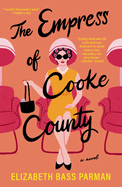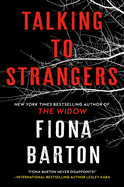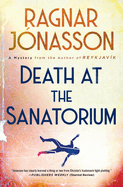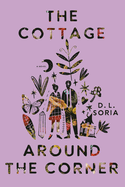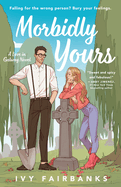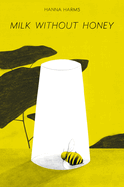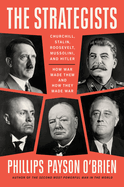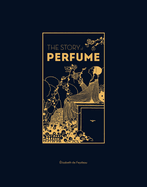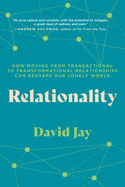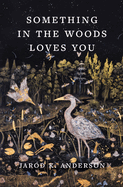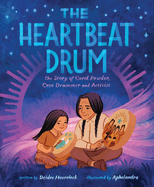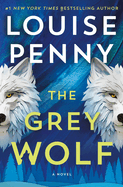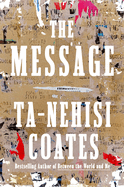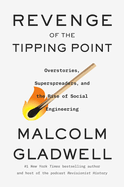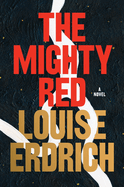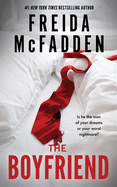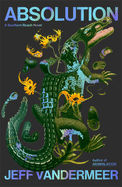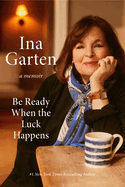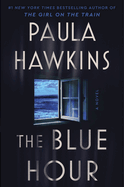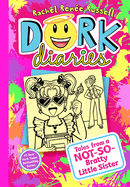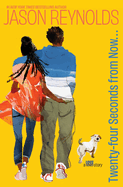Friday, September 13, 2024
This week, we offer up a feast of fantastic books, including Baking in the American South, in which food writer Anne Byrn provides hundreds of recipes, alongside mouthwatering photos by Allen Rinne, that answer the question, "What makes Southern baking so special?"; and The Full Moon Coffee Shop, where feline proprietors prepare "just the right" dishes for their directionless clientele, while also offering "helpful star charts to clarify (better) choices." Plus, teen readers are sure to enjoy Tigest Girma's Immortal Dark, "a fabulously bloody and intricate reimagining of the vampire myth" that pivots on a treacherous ancient agreement.
In The Writer's Life, Jacqueline Woodson takes a look back at her celebrated memoir Brown Girl Dreaming and the role it played in helping her understand the historical context she was born into. She also elaborates on the necessity of hope in both writing and everyday living.
Fathers and Fugitives
by S.J. Naudé, transl. by Michiel Heyns
Children, from infants to adult offspring, have a rough go of it in Fathers and Fugitives, South African author S.J. Naudé's uncompromising novel composed of a quintet of connected stories. Translated from the Afrikaans by Michiel Heyns, these pieces span decades in the life of Daniel, a gay South African journalist based in London, "the British broadsheets' tattletale from the colonies." At the novel's outset, he meets two Serbian men at the Tate Modern and begins an intimate relationship with them despite suspicions that their intentions are less than noble. Years later, Daniel returns to Cape Town to reconnect with his estranged elderly father, an investment banker whose dementia has given him "a memory apparently wiped clean overnight."
Naudé's gift for gut-wrenching sequences in these early chapters is even more pronounced in subsequent entries. In one, after his father's death, Daniel has to satisfy one condition to collect his inheritance: visit his "seriously ill" cousin, Theon, in the Free State and "do his best to support and encourage" him, a task that turns out to involve caring for a 10-year-old boy with blood cancer. Even more devastating is the story in which Daniel, living on a South African farm, wants to become guardian of a three-month-old baby whose mother has died, only for a young man recently taken in by the farm's owners to complicate the prospect. Grim stuff, but Naudé's compassion for his characters makes it a worthwhile reading experience. The author's first novel to be published in the U.S., Fathers and Fugitives is an important addition to South African literature. -- Michael Magras, freelance book reviewer
Discover: Fathers and Fugitives by S.J. Naudé is a moving quintet of stories spanning decades in the life of Daniel, a gay South African journalist based in London, and his romantic and familial relationships.
The Full Moon Coffee Shop
by Mai Mochizuki, transl. by Jesse Kirkwood
Mai Mochizuki's delectable The Full Moon Coffee Shop, cozily translated by Jesse Kirkwood, follows other whimsical, welcoming café-themed Japanese novels, like Toshikazu Kawaguchi's Before the Coffee Gets Cold and its multiple sequels. Here the eponymous shop "has no fixed location," but rather just appears, with lunar cooperation, when would-be patrons most need the encouraging refuge. Orders aren't possible, however, because the staff--yes, of course, they're cats!--happen to bring out just the right "desserts, meals, and drinks--selected just for you."
Mizuki was "dubbed a hitmaker" back in her 20s for all the successful TV dramas she wrote; now at 40, after too many flops, she's pseudonymously writing video game storylines for supporting characters. TV director Akari can't get over her last almost-affair, while Akari's star actress, Satsuki, is being publicly vilified for being a married actor's mistress. Takashi, co-owner of an IT company, might have a second chance at first love while helping his new client, Megumi, build a website for the career of her dreams. With each character facing life changes, astrologically astute felines are at the ready with helpful star charts to clarify (better) choices.
Mochizuki is already well established among manga aficionados, with multiple ongoing series available in translation (Holmes of Kyoto, Alice in Kyoto Forest). She's an easy, engaging writer to enjoy; her narratives here are contemporary and universal, with a gratifying emphasis on unexpected connections enabled by acts of kindness. Not surprisingly, the magical encounters begun in The Full Moon Coffee Shop continue in sequels published in Japan. Hopefully those multiple volumes will also extend their enchantments to English-language readers soon. --Terry Hong
Discover: Welcome to The Full Moon Coffee Shop, a delectable, whimsical establishment where astrologically astute cats serve star charts with just the right meals, desserts, and drinks.
Guide Me Home
by Attica Locke
Guide Me Home, Attica Locke's tense, gripping final novel in her Highway 59 trilogy, examines the political landscape of East Texas during the presidency of Donald Trump and probes the inner landscape of a Black man forced to reckon with his choices and his complicated family history.
Struggling with the ethical implications of his last case (detailed in Heaven, My Home), Texas Ranger Darren Mathews has turned in his badge. As he considers what to do next (including whether to resist the siren call of bourbon), his semi-estranged mother shows up at his house with a story about a missing college student: Sera Fuller, a Black girl who suddenly disappeared from her all-white sorority house. Though Darren knows his mother is a notorious liar, he's worried for Sera and intrigued by the case. As mother and son investigate, they turn up secrets about Sera's family, and Darren begins asking questions about his own history--the version he's heard, and the less clear-cut truth.
Locke writes with deep affection about her native east Texas, but also unflinchingly exposes its deep racism: the personal, political, and economic history that allows wealthy white people to manipulate people of color. Locke weaves together the mystery of Sera's disappearance with the fraught realities of Trump-era Texas, and explores Darren's complex feelings about the career he loves and the mother he has never truly known.
Powerful and unsettling, full of layered characters and difficult choices, Guide Me Home is a mystery for readers who appreciate nuance and resist too-tidy endings. --Katie Noah Gibson, blogger at Cakes, Tea and Dreams
Discover: Attica Locke's powerful third mystery featuring Texas Ranger Darren Mathews examines family secrets and fraught political realities in Trump-era east Texas.
The Life Impossible
by Matt Haig
An unusual bequest drives a retired widow to abandon her English bungalow and move to a glitzy Mediterranean island in Matt Haig's magnificently plotted mystery, The Life Impossible. Haig explores "love, fear, grief, guilt, [and] forgiveness" in a satire-fueled drama layered with otherworldly mysticism.
Former math teacher Grace, a self-described "crotchety old Brit," is the last person who would seek adventure. She hasn't felt pleasure since her son, Daniel, died in a horrible accident decades ago. Her life is upturned when an old colleague, Christina, bequeaths her a house in Ibiza, Spain. The circumstances of Christina's death, however, remain mysteriously unclear. Grace surprises herself by setting off for Ibiza.
Her quest takes on a magical aura when she meets Christina's friend Alberto. She reluctantly goes scuba diving at midnight with him, and he shows her an ancient seagrass meadow, brilliantly illuminated by an ethereal force beneath Ibiza's waters. Environmental activists want to save the meadow from a malevolent businessman eager to exploit it for profit, and Grace finds herself the unlikely heroine of their epic crusade. The mystery of Christina's disappearance, it turns out, is connected to the impending ecological threat.
Grace's story, as recounted in her correspondence with Maurice, a former student, sparkles with humor at the absurdity of everyday life and marvels at the miracles that unfold when unexpected opportunities are seized. Therein, Haig (Notes on a Nervous Planet; How to Stop Time) reminds readers, lies the true magic of being alive. --Shahina Piyarali
Discover: An unusual bequest drives a retired teacher to leave her home in England and move to Ibiza, in this captivating, satire-fueled mystery layered with otherworldly mysticism and ecological drama.
Katharine, the Wright Sister
by Tracey Enerson Wood
In her fourth historical novel, Katharine, the Wright Sister, Tracey Enerson Wood charts the Wright brothers' thrilling (and sometimes harrowing) journey toward mechanical flight, made possible in large part by the efforts and sacrifices of their sister, Katharine.
Wood (The President's Wife) toggles expertly between three points of view: those of Wilbur, Orville, and Katharine herself, providing their varied perspectives on the highs and lows of their attempts to build and perfect their flying machines. Although most Americans have heard of the Wrights' flight at Kitty Hawk, N.C., Wood fills in the background of how they got there: dozens of failed attempts, countless calculations of wind speed and resistance, and numerous yards of white muslin, which Katharine sourced for her brothers. Wood explores the sometimes tricky dynamics among the siblings: Wilbur's ambition, Orville's social anxiety, and Katharine's inner conflict between pride in her brothers' work and resentment at missing some key triumphant moments. That conflict eventually comes to a head when Katharine wonders if it's too late to pursue her own happiness--or if her family will understand why she needs to.
Wood draws on historical documents and research to immerse the reader in the Wrights' world of Dayton, Ohio, at the turn of the 20th century, sharing details of the music, clothes, food, and social issues of the day. Katharine later becomes involved in the suffragist movement in Ohio, and the Wrights travel across Europe, meeting heads of state and touring iconic cities. Readers will be swept away by Wood's vivid depictions of early flight, and inspired by Katharine's dedication to stay true to both her brothers and herself. --Katie Noah Gibson, blogger at Cakes, Tea and Dreams
Discover: Tracey Enerson Wood's fourth novel charts the Wright brothers' journey to successful flight and celebrates the vital contributions of their sister, Katharine.
Songs for the Brokenhearted
by Ayelet Tsabari
Ayelet Tsabari's luminous first novel, Songs for the Brokenhearted, explores the complex history of a Yemeni Israeli family and a daughter's journey to learning more about the mother she never understood.
Tsabari (The Art of Leaving) centers her narrative on Zohara, a frustrated Ph.D. candidate living in New York City in 1995. She returns home to the Tel Aviv area after her mother, Saida, dies. Zohara is still grappling with her divorce and finds herself undone by her mother's passing, though their relationship was always fraught. While she cleans Saida's house and sifts through her belongings, Zohara discovers a set of cassettes with recordings of Yemeni songs in her mother's voice, and a mysterious manuscript containing a love story she's never heard. As she struggles to reconcile these discoveries with the image she holds of her mother, Zohara realizes that most stories--even her own--are more complicated than she expects.
Although the novel is mostly Zohara's story, Tsabari draws in other perspectives, including that of Yaqub, a young Yemeni man who meets Saida in an immigrant camp in 1950, and Zohara's nephew, Yoni, whose grief over his grandmother's death spurs him to join student protests as political tensions rise to a fever pitch. Tsabari weaves together the intimate experiences of her characters' emotional lives with larger narratives about the Middle Eastern Jews who emigrated to Israel and the peace agreements of the mid-1990s that provoked strong reactions on all sides.
Tender, wry, and powerfully written, Tsabari's novel is a tribute to the bonds of family and sometimes conflicted but unmistakable gravitational pull of home. --Katie Noah Gibson, blogger at Cakes, Tea and Dreams
Discover: Ayelet Tsabari's luminous, powerful first novel explores the complex history of a Yemeni Israeli family against the backdrop of political tension in 1990s Israel.
The Booklover's Library
by Madeline Martin
Madeline Martin thoughtfully explores the imprint of World War II on a British mother and daughter in The Booklover's Library, a deeply moving, meticulously researched historical novel.
Set in England, the story follows Emma Taylor, whose mother died soon after she was born. Her beloved father raised her in the bookshop he owned, passing on to her his passion for books. After he perished in the fire that also claimed his shop, Emma married a solicitor, but he was struck and killed by a car when their daughter, Olivia, was still very young.
In 1939, as World War II looms, Emma struggles to find work--being widowed with a child is deemed "too much of a liability" for employers. Then she encounters a woman familiar with her father and his bookshop, who is impressed by Emma's literary knowledge and offers Emma a position at a subscription-style lending library, with conditions: Emma must claim that she is unmarried and be addressed as "Miss Taylor," and she must refer to her daughter as her "sister."
Amid the war, a multitude of challenges arise, and Emma is forced to send Olivia away to the English countryside to keep her safe. Separated, mother and daughter struggle in an uncertain world, but the power of friendship and community and the comfort of books sustain them.
Martin (The Last Bookshop in London) authentically depicts how the terror of World War II--and the many sacrifices so many people made--inspired great resilience of the human spirit. --Kathleen Gerard, blogger at Reading Between the Lines
Discover: This authentic, tender, and sometimes harrowing novel follows a book-loving British mother and her daughter as they navigate the perils of World War II.
The Empress of Cooke County
by Elizabeth Bass Parman
Scheming Southern flare lights up The Empress of Cooke County, the first novel by Elizabeth Bass Parman. Set in 1966, in the small, folksy town of Spark, located in Cooke County, Tenn., this dual point-of-view narrative centers on a fraught mother-daughter relationship.
Posey Jarvis is an outspoken, 38-year-old wife and mother who idolizes Jacqueline Kennedy. She and her sweet, good-natured husband of almost 20 years, Vern, appear settled in Spark. However, Posey still carries a secret torch for a man who jilted her years before; swigs of gin from a tucked-away flask help her cope. Posey's broken heart still colors her life and, especially, her high hopes for her 18-year-old daughter, Callie Jane. When Callie Jane is shocked by an unexpected marriage proposal and feels pressured into saying yes by her fiancé's family, she must confront the expectations that have shaped her life. The stakes are raised when Posey inherits a once glamorous but now dilapidated house from a long-lost relative; she decides to spruce up the house for Callie Jane's upcoming wedding and her own 20th high school reunion. A lifetime of angst, secrets, and rebellion escalates between overbearing, conniving Posey and Callie Jane, who fights to finally come into her own.
Mounting drama sharpens brisk plotting, which includes story threads about a Peeping Tom and the changing mores of the social-climbing South. Fans of unfaltering Southern belles written by authors such as Fannie Flagg and Kathryn Stockett will bask in the sassy charm of Parman's stellar debut. --Kathleen Gerard, blogger at Reading Between the Lines
Discover: Elizabeth Bass Parman's debut novel is a sweet and sassy mother-daughter saga that sparkles with juicy secrets and scheming, with 1960s Southern flare.
Mystery & Thriller
Talking to Strangers
by Fiona Barton
Though we've heard the warnings, talking to strangers sometimes can't be avoided, as Fiona Barton (The Widow; The Child) shows in her sharply plotted thriller, Talking to Strangers. Such conversations aid Detective Inspector Elise King in her many investigations in the English town of Ebbing and are business as usual for journalist Kiki Nunn. But warnings to children about avoiding unknown people sometimes go unheeded.
Chats with strangers may have led to the murder of hairdresser Karen Simmons, who ran a singles group called Free Spirits. Karen, who was well known in Ebbing, was last seen during the group's gathering at a popular pub. As Elise's inquiries ramp up, Kiki follows her own leads garnered during a recent interview with Karen about her single life. Friendly rivals Elise and Kiki clash but realize cooperation is mutually beneficial. Elise needs a successful case, emotionally and professionally, since she has just returned to duty following treatment for breast cancer, while Kiki hopes her reporting earns her a promotion. Karen's high-profile murder also piques the interest of Annie Curtis, whose eight-year-old son was murdered 16 years before, in the same place where Karen's body was found.
Elise tries to keep her health concerns from her police colleagues. Kiki worries that she neglects her daughter, while Annie wonders if Karen's murder is linked to her family. Barton effortlessly moves Talking to Strangers among the three women's points of view and delves into the personal challenges each deals with during the search for Karen's murderer, adding to the intense suspense. --Oline H. Cogdill, freelance reviewer
Discover: A police detective, a reporter, and the mother of a murdered child are linked by the investigation of a hairdresser's death in this intense thriller.
Death at the Sanatorium
by Ragnar Jónasson, transl. by Victoria Cribb
At the rate Ragnar Jónasson is going, it will soon be easier to list the Icelandic noir titles he hasn't written than the ones he has. To his chiseled and frequently chilling body of work he adds Death at the Sanatorium, translated from the Icelandic by Victoria Cribb, and a spin-off of his novel The Darkness.
It's 2012, and Reykjavík-based Helgi Reykdal is writing his dissertation for his master's degree in criminology. His subject is a decades-old cold case: one morning in 1983, a nurse arrived at work--a patient-free former tuberculosis hospital being used for research by a small staff--and found another nurse dead, two fingers cut off. A second staff death on the premises a week later was written off by the police--lazily, as Helgi sees it--as a suicide. The novel skitters around in time, airing the viewpoints of the surviving sanatorium staff, whom Helgi interviews, ostensibly for his dissertation. The truth? He's bent on getting to the bottom of the two sanatorium deaths.
Death at the Sanatorium is a wily bit of thriller business that includes a few fleeting appearances by Hulda Hermannsdóttir, the formidable detective who drives Jónasson's Hidden Iceland series (The Darkness; The Island; The Mist); her scenes make up one of two personal-story arcs that the novel leaves tantalizingly unresolved. The shifting timelines and perspectives keep the question "How will this figure into things?" percolating, as does Helgi's curious obsession with golden-age detective novels. At one point he rhapsodizes that they offer "pure escapism." Gratifyingly, Jónasson's books offer more. --Nell Beram, author and freelance writer
Discover: This wily thriller finds a Reykjavík man writing his criminology dissertation on a cold case concerning two mysterious deaths at a former tuberculosis hospital.
Science Fiction & Fantasy
Confounding Oaths
by Alexis Hall
A young nobleman allies himself with a bold army officer to save his sister from a disastrous fairy bargain in Confounding Oaths, Alexis Hall's witty, adventurous follow-up to Mortal Follies.
Robin Goodfellow, exiled from the fairy court and "trapped in the dreary, damp, culinarily moribund country" of England in 1815, narrates the travails of John Caesar, the biracial grandson of an earl. At a ball, another nobleman insults John's sister Mary by calling her a racist slur. John, who is "no pugilist," punches the man and consequently requires the rescue services of James Orestes, a handsome, heroic Black captain. Matters take a turn for the magical when Mary, discontent with her wallflower status, makes a wish to a fairy for beauty that's granted in a dangerous way. John will need the help of Captain James and his skilled cadre of comrades to save Mary from her wish turned curse and to thwart a mysterious and murderous cult. The attraction between the nobleman and the soldier is too intense to deny, but can the two men from different social classes find a happy ending to their fairy tale?
This puckish romp is filled with Hall's trademark bon mots passed through the mouthpiece of the snarkiest fairy in two realms. By packing plenty of longing and angst alongside the leads' strong chemistry, Hall (Boyfriend Material, A Lady for a Duke) creates a steamy love story while keeping the bedroom door closed. The novel's version of England includes fantasy elements but still provides ample room for social commentary. Fans of Bridgerton who long for a sprinkle of magic should snap up Confounding Oaths. --Jaclyn Fulwood, blogger at Infinite Reads
Discover: A nobleman and a dashing soldier get caught up in a dangerous magical plot and an even more dangerous love in this romantic fantasy from Mortal Follies author Alexis Hall.
The Cottage Around the Corner
by D.L. Soria
In D.L. Soria's adorable, wisecracking fantasy romance The Cottage Around the Corner, a small-town witch fights to save her family's business after a polished, indecently attractive mage sets up shop nearby.
Charlie Sparrow loves her life in Owl's Hollow, where she lives with her parents, Mama and Mim, and works in their magic shop, Chanterelle Cottage. She wishes they would let her invest some of her own money and take on more ownership but believes a catastrophic spell-casting mistake she once made has put those dreams out of reach. Then Sterling "Fitz" Fitzgerald and his sister Elinor move to town to open a slick, modern magecraft firm, and Charlie's family's already struggling shop might not survive the competition. Fitz may be "attractive in that urbane, aristocratic way where you can't decide if you want to seduce them or send them to the guillotine," but Charlie could never see herself dating a rival. Then a series of mysterious, magical catastrophes befall Owl's Hollow, and Charlie and Fitz must join forces to save their town--but nothing can save them from falling for each other.
Soria (Thief Liar Lady; Fire with Fire) delivers on the witchy, cottagecore atmosphere her novel's setting demands, offering up an enchanted broom named Broomhilde, plenty of spell casting, and a close-knit community. The plot recalls the classic rom-com You've Got Mail, which the characters repeatedly reference. Its emotional core strikes a heavier note than that film, as Charlie and Fitz both struggle to live up to their perceptions of their families' expectations, but readers looking for a cozy escape should find it here. --Jaclyn Fulwood, blogger at Infinite Reads
Discover: A witch joins forces with an attractive rival mage to break the curses on their town in this adorable cottagecore fantasy romance.
Romance
Morbidly Yours
by Ivy Fairbanks
With Morbidly Yours, debut author Ivy Fairbanks delivers an enchanting friends-to-lovers romantic dramedy.
A clever, immersive opening sets the tone: Lark Thompson, an upbeat, 29-year-old widow originally from Austin, Tex., mistakenly receives a box containing "five body bags, adult size" at her rental apartment in Galway, Ireland. Bewildered, cowboy boot-clad Lark sets out to deliver the misrouted package next door to Willow Haven, which she believes is a bed-and-breakfast. Instead, Lark finds a funeral home run by Callum Flannelly, a single, 34-year-old piano-playing undertaker who has social anxiety and speaks with a stutter. Both Lark and Callum face challenges that keep their lives in respective states of unrest.
After the sudden death of Lark's husband--a detail she guiltily conceals from Callum--she moved overseas to take on a nine-month assignment as a cartoon creator and animator. But once she meets deeply sensitive Callum, the two spend time together and strike up a friendship. Lark becomes determined to find shy, insecure Callum a wife before he turns 35 so he won't have to forfeit the family business, as required in his grandfather's will. During this pursuit, the relationship between Lark and Callum unexpectedly deepens.
Lark's and Callum's grief and reticence to fall in love anchor this lively first novel. Gaelic charm and a sweet, simmering romance, coupled with tender plot dilemmas driven by a well-drawn, small-town cast, lend hopeful buoyancy to the novel's more serious themes. --Kathleen Gerard, blogger at Reading Between the Lines
Discover: This sweet, enchanting romance unites an American widow and a sensitive Irish undertaker as they come to grips with the realities of their lives.
Graphic Books
Milk Without Honey
by Hanna Harms, transl. by Ruth Ahmedzai Kemp
"We would face a gray world without bees," writes Hanna Harms in her piercing graphic nonfiction debut, Milk Without Honey, translated from the German by Ruth Ahmedzai Kemp. With strategic precision, Harms focuses on the plight of wild and domestic bees that are ravaged by invasive mites, climate change, and monocultural agricultural systems. But she does not neglect the broader impact of the worldwide destruction of insects: "A third of global crop production depends on pollination, but three-quarters of all cultivated plants benefit from pollination," which isn't accomplished by bees alone--many other insects participate.
Harms's rather grim analysis is lightened by her sketched graphic style and a note of hope at the end. An illustrator and comics author, she employs a minimalist aesthetic and a palette of gray, white, black, yellow, and peach to maximize the impact of her message. The effect is elegant yet approachable, with the pencil lines softening the color contrasts. Some pages contain a setup that relies on boxes and panels, while others forgo any container and use negative space brilliantly.
The sparse narrative is sandwiched by a foreword from author Sarah Wyndham Lewis that serves as a call to action to help the bees, and a dense afterword by bee expert Jürgen Tautz, in which he underscores how dire the rapid decline of insect species is and what the consequences will be if humans don't make changes. Although Milk Without Honey is serious, Harms ensures readers leave with a glimmer of optimism for the future, and more importantly, actions they can take to help. --Nina Semczuk, writer, editor, and illustrator
Discover: This beautifully minimal, yet highly impactful graphic nonfiction is a lament about the plight of bees and the larger consequences of ignoring the demise of insects.
Food & Wine
Baking in the American South: 200 Recipes and Their Untold Stories
by Anne Byrn, photos by Rinne Allen
Baking in the American South: 200 Recipes and Their Untold Stories offers 200 recipes to savor, along with history, stories, tips, vintage snapshots, and mouthwatering full-color photos, but prepare to pause to bake up a tempting Southern treat. Baking in the American South is longtime food writer Anne Byrn's attempt to answer the question, "What makes Southern baking so special?"
Byrn (A New Take on Cake; Skillet Love) credits the book's recipes and insightful tips to cooks and bakers from 14 Southern states, including well-known names (Laura Bush's cowboy cookies), quietly renowned local figures (yeast rolls from a West Tennessee school cook named Charlie Moore), and widely known family recipes ("tea cakes like grandma made," which Byrn notes were "the emblematic food of the Great Migration"). Pies, "plain and fancy"; cakes, plus "frostings and flourishes"; puddings, pancakes, cookies, and a bountiful assortment of breads earn this cookbook a definitive status.
Anecdotes and insights accompany every recipe, but the collection suggests that Southerners might be satisfied living by bread alone. Cornbread, "the South's first daily bread" can be sweet or savory, crispy or fluffy, depending on the types of cornmeal, buttermilk, or pans used. Sugar? Opinions vary! Readers will find versions from President Jimmy Carter's White House chef Henry Haller and historian Shelby Foote. Roughly 20 biscuits illustrate how dough might be beaten, "docked," dropped, or morphed into shortbread or dumplings. Among her many thoughtful observations, Byrn credits the "unparalleled flavor" of Southern yeast breads to patience and overnight refrigeration. Home chefs will treasure this cookbook and appreciate Byrn's entertaining stories while their delicious regional fare bakes. --Cheryl McKeon, Book House of Stuyvesant Plaza, Albany, N.Y.
Discover: This definitive collection of Southern baking recipes will satisfy readers craving delicious treats and food-centric stories.
History
The Strategists: Churchill, Stalin, Roosevelt, Mussolini, and Hitler--How War Made Them and How They Made War
by Phillips Payson O'Brien
How war and personality shaped the grand strategy of five of the most influential leaders of World War II is the fascinating focus of The Strategists by historian Phillips Payson O'Brien (The Second Most Powerful Man in America). Referring to his subjects--Winston Churchill, Joseph Stalin, Franklin Delano Roosevelt, Benito Mussolini, and Adolf Hitler--as "The Five," O'Brien takes a fresh approach to a well-trodden topic with his emphasis on World War I as a defining shaper of each of the "grand strategists."
Hitler's experiences as a dispatch runner in that war embedded in his mind "the decisive power of modern, heavy artillery," but as a leader, his "stress on strength" was coupled with an inability "to understand rational trade-offs" such as mobility, O'Brien notes. Unsurprisingly, Churchill and Roosevelt receive high marks for their dominance of what O'Brien terms "the air-sea super-battlefield" and their view that the land war would be of "secondary" importance. They were right about this, he contends. Stalin held the "ideological/paranoid view of strategy," and Mussolini believed war was "a contest of will" not reliant on the quality and quantity of military material.
O'Brien seeds the ground in the first half of his study with the development of each leader's mindset, while the second half rigorously dissects the impacts of their decisions upon the course of the war, with a superb interlude bridging the interwar years. The Strategists is a rewarding and robust historical and psychological approach to the grand strategists of World War II and the decisions they--and they alone--made for the world. --Peggy Kurkowski, book reviewer and copywriter in Denver
Discover: This riveting study explores how five impactful leaders of World War II forged grand strategies based on their individual experience in World War I.
The Story of Perfume
by Élisabeth de Feydeau
Historian and perfume expert Élisabeth de Feydeau lovingly and intricately dissects an essential aspect of human history in The Story of Perfume. Poets, philosophers, and scientists alike agree that smell can evoke feelings and memories more powerfully than any other sense, so it's only natural that personal fragrance has inspired fandom throughout history. Whether they are drawn to lactonic, earthy, gourmand, or spicy notes, fragrance enthusiasts of all varieties will find this comprehensive perfume history appealing.
Feydeau explains that in the ancient world, fragrance served as a vehicle into the spiritual realm, but following the Industrial Revolution, it took on a more secular dimension in European society, though it remained a highly powerful and often sacred means of self-expression. For many people, perfume serves as an identity marker, a wordless way to convey an emotion or impression. It's heartening and inspiring to read how these intentions have spanned centuries and crossed geographical borders, and to realize how the transformations of perfume's functions haven't hindered its significance to humanity.
Although the book is textbook-esque, don't be intimidated. De Feydeau presents layered histories to readers in a compelling manner. The pages are delectably adorned with paintings, historical documents, and images of glamorous perfume bottles, making for an endlessly enlightening foray into a niche cultural object. The Story of Perfume provides readers with an approachable anthropological descent into an often-unconsidered manifestation of personality and intention. It's perfect not only for perfume buffs but for history nerds and aesthetes as well. --Jess M., bookseller at Elliott Bay Book Company
Discover: The Story of Perfume provides readers with an approachable anthropological descent into an often unconsidered manifestation of personality and intention.
Social Science
Relationality: How Moving from Transactional to Transformational Relationships Can Reshape Our Lonely World
by David Jay
How does a person create meaningful bonds with others in a fragmented world where hyperconnectivity paradoxically causes increasing isolation and a "crisis of loneliness"?
David Jay, an asexuality and relationship activist, provides a thoughtful exploration of the current human condition in Relationality: How Moving from Transactional to Transformational Relationships Can Reshape Our Lonely World. This examination of the pitfalls of superficial relationships offers a refreshing perspective on the importance of authentic human connection. Jay's work in asexuality advocacy helped him identify the traits and interactions that contribute to long, thriving relationships.
Jay investigates the complexities of interpersonal interaction and posits a roadmap for cultivating more long-lasting bonds, outside of romantic partnerships, for example. Relationality is also valuable for readers in leadership positions, because it offers insight into the power of transformational relationships to generate organizational success and effect positive social change.
This book will challenge and engage people interested in psychology, sociology, and anthropology. Jay's interdisciplinary approach yields a vivid array of perspectives on adapting "relational containers," which he defines as "environments that are cocreated with the goal of facilitating connection," to increase "relational agency," the "capacity to grow and change the relationship around us to meet our needs."
By illuminating the profound impact of relationality on individual well-being and collective progress, Jay's book proposes a compelling vision for a more connected and compassionate world.
At its heart, Relationality is a book for anyone seeking to foster better, more rewarding communities. It is a call to action for individuals and organizations to prioritize authentic relationships and build a more fulfilling future together. --Elizabeth DeNoma, executive editor, DeNoma Literary Services, Seattle, Wash.
Discover: In Relationality, an asexuality and relationship activist offers a thoughtful call for the primacy of human connection and provides suggestions for how to foster it in a transactional world.
Nature & Environment
Something in the Woods Loves You
by Jarod K. Anderson
In his 40s, poet Jarod K. Anderson (Field Guide to the Haunted Forest; Love Notes from the Hollow Tree) left his job in academia to try to survive the debilitating depression he'd mostly hidden for decades. Early on in his memoir, he describes taking a walk in the woods, quietly observing nature as he had not in some time. He communes with a great blue heron and finds that there may be solace in a place where he'd forgotten to look.
Something in the Woods Loves You describes the slow and difficult process of seeking help and getting better, in increments, and with relapses. Anderson's journey to wellness is not and perhaps never will be complete, but he does progress. His notes of advice are always couched within Anderson's personal experience, which he acknowledges will not be universal. The result is a memoir of the slow passage toward improved mental health, a deeply beautiful work of nature writing, and a treatise on the underestimated connections between the human and "natural" worlds. While its subject matter is undeniably heavy, Something in the Woods Loves You is frequently light and positive.
Something in the Woods Loves You is organized in a seasonal cycle and structured around 20 species, which include sugar maple, morel, eastern bluebird, lightning bug, raccoon, and human. His poet's prose renders shining, glinting details under a careful eye: great blue herons "are a mix of shaggy and angular, a blade of yellow stone dressed in flowing robes stitched from overcast skies." With these and other scintillating observations, Something in the Woods Loves You is revelatory. --Julia Kastner, librarian and blogger at pagesofjulia
Discover: A profoundly depressed poet takes to the woods and delivers a lovely, moving memoir of nature writing and mental illness.
Children's & Young Adult
Immortal Dark
by Tigest Girma
Immortal Dark is a fabulously bloody and intricate reimagining of the vampire myth, wherein an ancient agreement between vampires--or "dranaics"--and humans is all that keeps a massive slaughter of mortals at bay.
Nineteen-year-old Kidan Adane is a murderer. And she'll kill again when she finds the "shadowy vampire" she is convinced kidnapped her twin sister. Kidan is heiress to her parents' legacy, which should include the great House Adane, located on the hidden campus of Uxlay University. But in a baffling twist, Kidan's parents have willed House Adane not to Kidan, but to dranaic Susenyos Sagad, the very vampire Kidan is seeking. Uxlay University, an ancient Black community, exists because of an uneasy peace, the Three Binds, created long ago in Ethiopia between dranaics and humans. Once the alliance was forged, vampires were invited to live alongside humans as companions--as Susenyos had been doing at House Adane. To get to him and break her parents' will so she can inherit, Kidan must live in the estate with Susenyos. Kidan and Susenyos behave brutally--despite their growing and violent attraction--as each plots to make the other leave.
Tigest Girma's ambitious, vividly imagined debut conjures a complex, often messy world in which humans vie for power and vampires fight for control. Her smart writing, which never shies away from violence, features a cutthroat society where life is cheap and heroes rarely pretend to be virtuous. Readers will likely enjoy the intricacies of the mythmaking, and ultimately be left pondering the price of survival in this rewarding and original read, first in a planned trilogy. --Lynn Becker, reviewer, blogger, and children's book author
Discover: This debut features a fabulously dark and intricate world of vampires that is rooted in an ancient Ethiopian community and features an uneasy, and bloody, alliance between humans and "dranaics."
Popcorn
by Rob Harrell
Popcorn by Rob Harrell (Wink) depicts the "glorious mess" that is life for seventh-grader Andrew Yaeger as he endures a series of misadventures on picture day.
Andrew lives with his mother, Susan, and his grandmother G, who has Alzheimer's disease. Today is picture day. It also happens to be Susan's first day at her new job. Susan's best friend, Mika, comes to take care of G, and Andrew heads off to school with his best friend, Jonesy, Mika's daughter. Andrew has "an issue with worrying. Stressing. Obsessing," and today his anxiety is peaking because both his mom and G say looking nice for school photos is "super important." Despite his best efforts to stay presentable, Andrew is bombarded by contaminants: a classmate's juice-laden sneeze, a flying ketchup rocket, a science experiment gone awry, and debris from physical violence at the hands of a bully. Just as Andrew thinks his day can't get any worse, he receives a call from Mika: G has gone missing.
Popcorn is a sincere and honest narration of one child's experience living with anxiety in a demanding world. Throughout the story, Andrew struggles with various stressors at school and home, like bullying, divorce, caretaking for elderly family members, and his own mental health. Harrell illustrates these worries in cartoonish, often comical, black-and-white spot illustrations. Andrew's first-person narration has a sense of humor that fills the otherwise distressing story with a sense of levity, always including hope that things will turn out for the best--even when you (a small kernel in the world) feel like you may be about to pop. --Cade Williams, freelance reviewer
Discover: The "glorious mess" that is life for seventh-grader Andrew Yaeger is depicted here as he endures a series of mishaps on picture day.
Barnaby Unboxed!
by Terry Fan, Eric Fan, and Devin Fan
The Fan Brothers--Terry and Eric, joined again by youngest brother, Devin--bring back one of the "Perfect Pets" from their award-winning The Barnabus Project (2020) in the maybe-even-better companion title, Barnaby Unboxed.
Barnaby is a genetically engineered "half mouse and half elephant, with just a dash of flamingo." One day, Barnaby is chosen by a pleading "little voice": "Can we take him home? PLEASE?" The little girl waits until returning home to unbox Barnaby in front of a camera "so her father could record the special moment." Their relationship commences with an "I love you" and includes funny costume dress-up and learning "marvelous tricks." The pair are constant companions until the girl becomes obsessed with the new "Rainbow Barnaby" on TV and she quickly loses interest in her (formerly) perfect pet. Her father takes Barnaby for a walk, giving Barnaby the chance to run away--not forever, "just long enough for people to miss him." Unable to get home alone, though, he bonds with other lost ("or forgotten") pets, makes new friends, and survives. By the time the little girl finally finds him, Barnaby hardly remembers her. Can the girl regain his trust?
The story is a poignant delight that seamlessly incorporates striking lessons about pets, responsibility, and furever commitment. The Fan brothers' extraordinary art--rendered in graphite and colored digitally--overflows with imagination and whimsy. Their brilliant control of perspective is an invitation to share the point of view, accomplished with illustrations featuring the girl's or Barnaby's back, allowing the reader to share the same gaze. Audiences should be so lucky for more, more, more. --Terry Hong
Discover: The fabulous Fan brothers present more perfect pets in this imaginative companion to their award-winning picture book The Barnabus Project.
Taxi Ghost
by Sophie Escabasse
In Sophie Escabasse's delightfully entertaining and strikingly illustrated middle-grade graphic novel Taxi Ghost, Adèle is anticipating a low-key winter break when she inherits the "family gift." Adèle's grandmother, who sees it less as a gift and more as a curse, explains to her, "People like us... have the power to stand in the middle"--they are mediums, "a bridge between two worlds." As Adèle comes to terms with the startling fact that her first period brought with it the ability to see and hear ghosts, she embraces her newfound talents and discovers a whole new side of Montreal, complete with ghost-watching cats, soul eaters, and Ambroise, a computer-hacking spirit. The ghosts Adèle encounters in her Mile End neighborhood are losing their homes due to gentrification and they believe Adèle can use her voice--and physical body--to stop the new builds.
Escabasse (Witches of Brooklyn) creates a rib-tickling universe in this standalone title. Apparitions hate snow and leave ghost marks on the cars of the living so they can tell which ones end up in which neighborhoods: "Every car is a ghost's taxi, really." The artist uses thickly lined panels that are often broken by speech bubbles, objects, and characters, allowing her art--much like her ghosts--to refuse physical boundaries. Ghost characters are all translucent and monochromatic while the living are opaque and colorful, and Escabasse makes both groups sympathetic beings through an emphasis on their emotions: the rage of Adèle's grandmother, Adèle's own shock and wonder, and the teenage melodrama of Ambroise. Be sure to catch this ride full of humor, suspense, and beautiful art; it will be a thrill. --Jen Forbus, freelancer
Discover: When a tween discovers she can talk to the dead, they recruit her to help them stop the gentrification of their city in a heartwarming and humorous graphic novel for middle-grade readers.
The Heartbeat Drum: The Story of Carol Powder, Cree Drummer and Activist
by Deidre Havrelock, illus. by Aphelandra
Deidre Havrelock (Indigenous Ingenuity), a member of the Saddle Lake Cree Nation, tells the story of Cree activist and musician Carol Powder in The Heartbeat Drum, a visually striking biographical picture book. Havrelock uses accessible language while illustrator and emoji designer Aphelandra's arresting illustrations express strength and jubilation.
Carol learned to love music sitting beside her great-grandfather (moshum). He taught her how to sing and drum and made the girl her own hand drum with moose hide. "Women first made the drum," Moshum said. "It is the sound of a mother's heartbeat." Moshum knew Carol would become a gifted singer but warned, "When I am gone and you grow older, our ways will change--women will not be accepted." Carol, he said, would bring women back to the drum: "because that is where they belong, beside us." Cree ways did change, and although women found themselves unwelcome, Carol "knew women gave life to the drum." Carol passed on Moshum's teachings to her children and her grandchildren, started a female drumming group (Chubby Cree), and became an activist by consistently spreading the healing joy of Cree music.
Aphelandra's ink, brush pen, and digital artwork is radiant. The strong lines and intense colors produce a sense of movement that pulls readers into the heartbeat celebration of the drum. The flowing nature of the lines evokes sound waves, and the text includes lyrics to a song Carol's grandmother sang, highlighting Cree traditions and beliefs. Much like Carol and her music, this picture book is an inspiring experience from start to finish. --Jen Forbus, freelancer
Discover: A Cree girl carries on the drumming traditions of her family in a heartening biography for young readers.
Coming Soon
The Writer's Life
Jacqueline Woodson and the 10th Anniversary of Brown Girl Dreaming
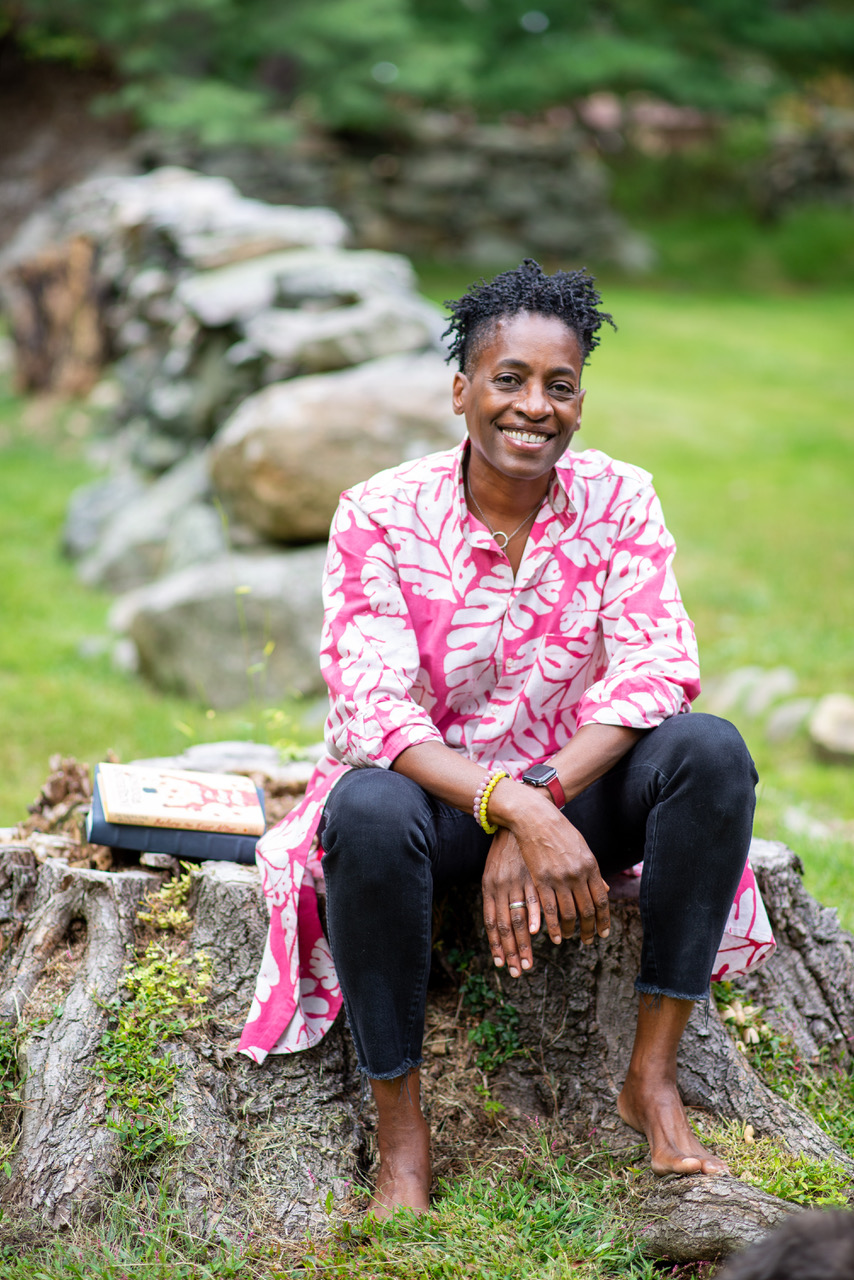 |
|
| Jacqueline Woodson (photo courtesy John D. and Catherine T. MacArthur Foundation) |
|
Jacqueline Woodson has always been a writer, as her memoir Brown Girl Dreaming (Nancy Paulsen, $10.99)--a National Book Award Winner, Coretta Scott King Award Winner, and Newbery Honor Book--reveals. In addition to the many awards she has garnered for her more than 40 books, Woodson was named a National Ambassador for Young People's Literature, a MacArthur Fellow, and established Baldwin for the Arts, an "Artist Residency for the Global Majority." Penguin is celebrating the Brown Girl Dreaming with a 10th anniversary event on September 21 at Symphony Space in New York City.
Here, Woodson chats with Jenny Brown, who first interviewed the author 10 years before the writing of Brown Girl Dreaming.
When you began writing Brown Girl Dreaming, had you been thinking about writing a memoir of your childhood for a while?
I started writing Brown Girl Dreaming because I wanted to figure out how I got to the place of being Jacqueline Woodson, coming from this background where my family didn't have a lot of access. I came from what was deemed by some an underserved community: a "ghetto" or what was later on called "urban" or any number of terms people use for a neighborhood that is predominantly Black and brown people and underserved. When you looked at the dynamic of it, it seemed like something that "shouldn't have happened." And here I was. I was able to publish books. I had won awards. I was able to travel because of my writing, and I wanted to go back to the beginning and understand how I got here.
There's the saying that if you know where you come from, you'll know where you're going. I deeply believe that. I wanted to get a sense of all the people I came from, the places I came from, the ideas I came from, the religions I came from.... I feel like I had always been writing Brown Girl Dreaming.
Is poetry your preferred style?
Brown Girl Dreaming is about memory. And this is the way memory comes to us. It comes to us in these small moments with this white space around it. Stuff we don't know, stuff that maybe isn't connected. One poem to the next to the next. I wanted to acknowledge that unknown. And I think if I had tried to write Brown Girl Dreaming as some kind of straight narrative, it would have been a lie. There's so much I don't remember. I also think there is something about this poetic form that allows you to slow down and really see both the words on the page and the images I'm trying to create.
So, by the time you get to the end of a poem like "I am born on a Tuesday at University Hospital/ Columbus, Ohio,/ USA--", you're in Columbus. You've seen me being born. You've seen that hospital. And then you see the cut and I open the lens a little wider, "a country caught/ between Black and White." Now you're seeing that moment in history. I wanted to make very visual but also poetic and beautiful in that way. The language was very important to me because it is also a book about language and story.
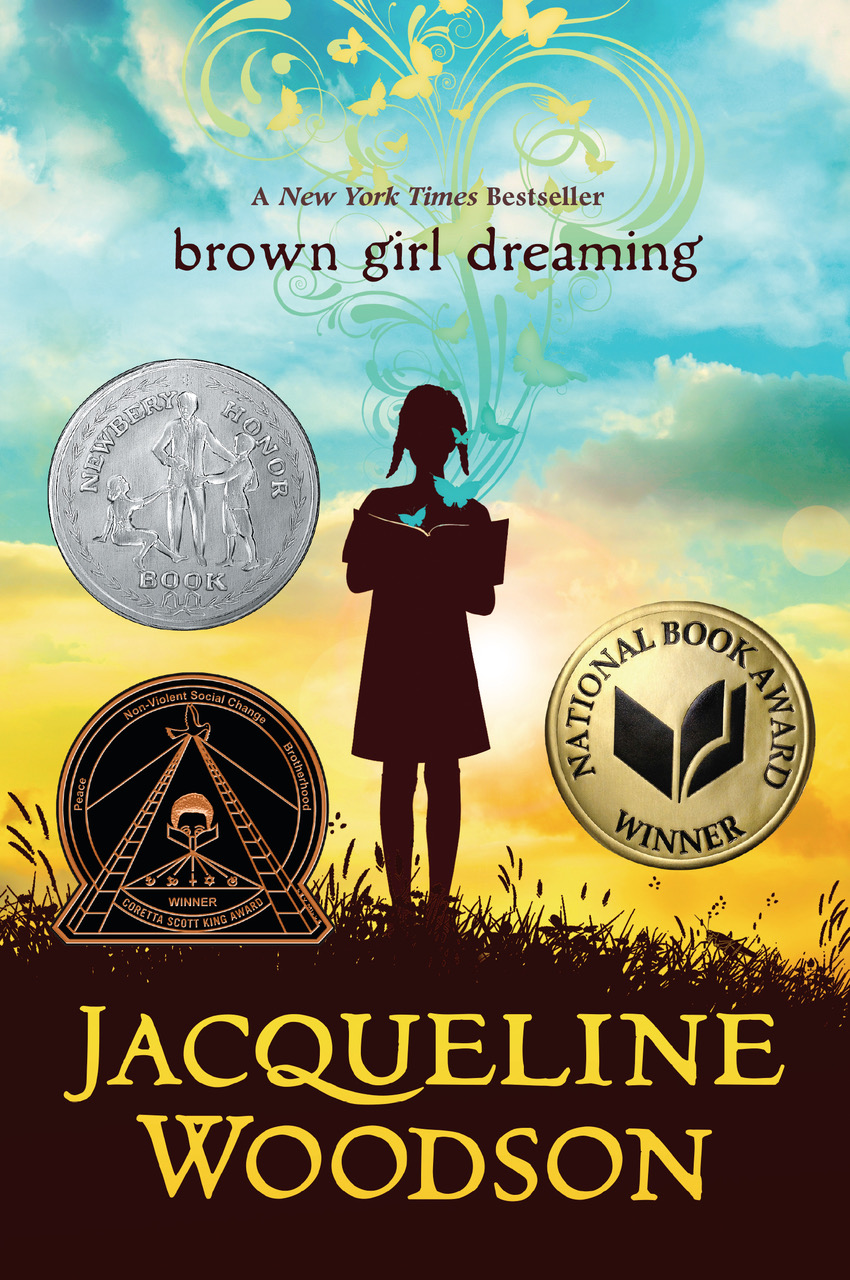 Your memoir begins by situating your birth within the historic and geographic landscape. Why did you begin it this way?
Your memoir begins by situating your birth within the historic and geographic landscape. Why did you begin it this way?
I remember sitting down to breakfast with my best friend Toshi Reagon, and saying, "I'm trying to write about my childhood and nothing happened." And she's like, "What are you talking about? When you were born, this country was on fire!" Toshi had grown up with her mom, Dr. Bernice Johnson Reagon, [who] had been through the civil rights movement. It set the narrative perspective for me: knowing that I was born within the context of time and that we all are. Inside that context was the fact that I am one generation removed--barely--from Jim Crow. All these things that were happening in our country were impacting me. That became important to me--to remember what was happening, not just to me, but to the world around me and document that.
I guess that's why the book is so challenged these days, because I document a history that speaks to a time when our country wasn't kind to Black and brown folks. I mean, there are ways in which it's still very unkind, but it was legislated unkindness happening. I wanted to write about the ways in which we were free and the ways in which we were still shackled by laws and attitudes and people's hatred. So, Brown Girl Dreaming became that story of both love and struggle and more love.
In this book, you include the universal experiences and details specific to your experience of understanding the differences between living in the South and living in the North as a young woman of color. Can you describe how you balanced these themes?
I think I balanced them the way I balance my everyday living. I think it's important to look at the struggle and the good and walk through the world knowing that we carry all of that.
When I write, a very strong theme is hope. What is the hope that keeps us turning the page; what is the hope that keeps us getting up in the morning and doing the work we were brought here to do? I think I brought that same hope to Brown Girl Dreaming, while at the same time wanting to bring truth. You can't live your life in struggle mode, and you can't not acknowledge the struggle if you want to get past it. I want all that balance to be there.
Your father's comment in "football dreams," too, points to this contrast between the North and the South. He says of the South, "...no colored Buckeye/ in his right mind/ would ever want to go there." Your narrative lays out the ways in which history and geography divide your family--was the writing of Brown Girl Dreaming a way of unifying your family?
You know, one thing that we don't get to in Brown Girl Dreaming is that when I was around 13 years old my parents got back together. And in that way, I got to really know my father, my father's side of the family and Ohio, Nelsonville, Athens, that part of the region. I do think Brown Girl Dreaming for me was about understanding that 50% of my DNA is my dad's, 50% is my mom's; and that 50/50 split is about so much more than DNA. It's about experience, it's about culture, it's about geography, and so I wanted to get that on the page.
The trauma of your brother Roman eating lead paint was a poignant moment in the book, as is your piece about people following you in the stores downtown. These scenes become momentous events for readers through their specificity. How did you decide which to include and which to leave out?
I think it comes back to me wanting to put on the page the events that really informed who I was going to become and who I was becoming. My brother's lead paint eating had an impact on me, and the wild thing of course is that history repeated itself when the lead paint crisis began in Michigan. So, there is that way in which I really wanted to show that none of this is behind us; even as we talk about it as history, there are still elements of it that are very much a part of our world today. I think that allows people to see that there is a deep connection between the past and the present. And there were things I left out that I didn't feel moved the narrative forward.
So, yeah, it's talking about me in the '60s and '70s. But it's also speaking to events that we are familiar with today, from Sandra Bland to so many people. And the same refrain is true. They're not getting followed around in stores, but even worse, they're getting killed. It's part of a continuum, a part of the work that still needs to be done. --Jennifer M. Brown
Book Candy
Book Candy
Open Culture shared Maurice Sendak's first published illustrations, for a 1947 popular science book, Atomics for the Millions.
---
Mental Floss traced "the not-so-nice origins of 'bookworm.' "
---
CrimeReads on "Not Just Fargo: Why Minnesota Makes the Perfect Setting for Crime Fiction."
Discover Great Publishers
Celebrating 20 Years
Magination's What to Do Guides
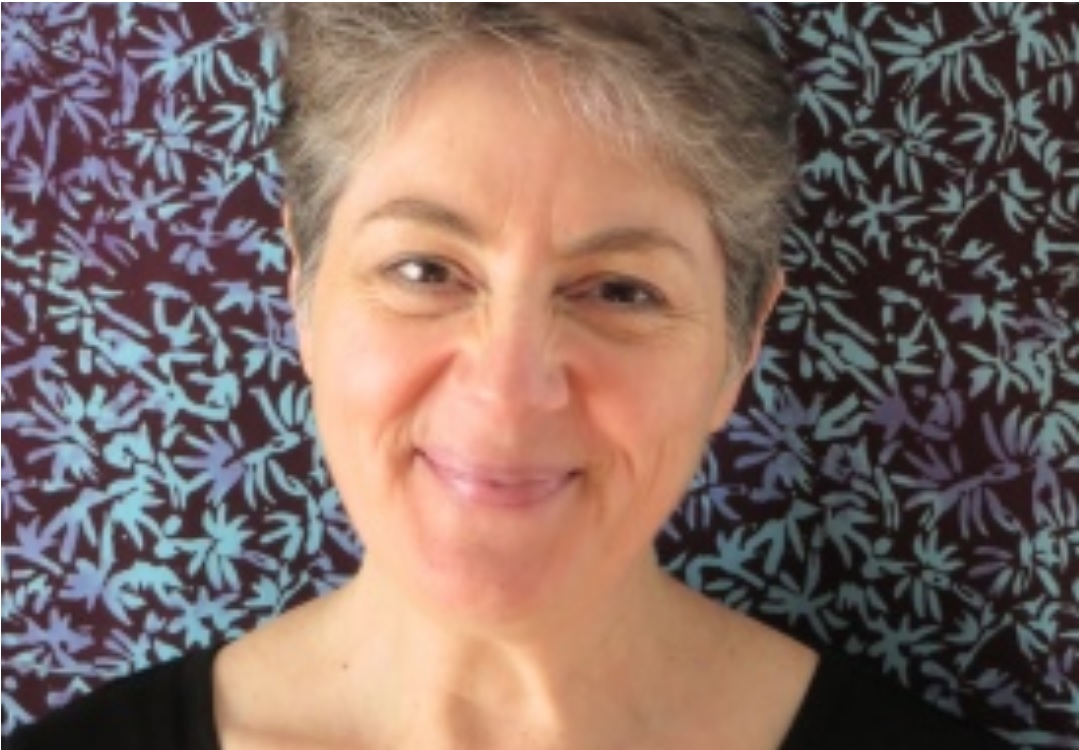 |
|
| Dawn Huebner | |
Dr. Dawn Huebner is a psychologist, parent coach, speaker, and the award-winning author of 20 mental health books for children. Her books have been translated into 25 languages and have touched the lives of children around the world. She is the author of six of the What to Do Guides books, including What to Do When You Worry Too Much, the 2004 title that started the series. Huebner spoke with Shelf Awareness about the series, updating it, and helping children live happier lives.
What is What to Do When You Worry Too Much's origin story?
Long before self-publishing and digital art, I wrote and hand-drew illustrations for a stapled-together booklet I gave my clients to help them remember the things they were learning in therapy. Children loved it, and benefited from it. So, I turned that handmade booklet into the now iconic What to Do When You Worry Too Much, and then wrote five more books using the same interactive format. Thus began Magination Press's What to Do Guides.
Why were these books such a hit?
They are warm, humorous, and pitched perfectly to 6-12-year-olds. They normalize difficult feelings while providing children with tools to overcome them. And they work! These books are interactive, with space for children to draw and write directly in the book so they can customize what they are learning, internalize it, and ultimately master even difficult cognitive-behavioral skills. When these books came out, there was nothing like them in the market.
Why produce second editions?
What to Do When You Worry Too Much, and my next five books (Temper Flares, Grumble, Brain Gets Stuck, Dread Your Bed, and Bad Habits) came out when I was a young psychologist. I am now an older, more experienced psychologist. Both my understanding and the field's understanding of anxiety (and other mental health issues) has changed, as has popular culture. For example, first editions of What to Do Guides reference television rather than screens, and the artwork doesn't show the array of same-sex, one-parent, and mixed-race families children grow up in today. So, both the content and the art of the books needed a refresh.
What was it like to update these books?
It was tricky. We needed to keep the books familiar to the therapists, school counselors, pediatricians, and parents devoted to the original series. But we also needed to bring them in line with current best practices, and make sure they were relevant to today's young people. We kept the best parts--the drawing and writing elements, the metaphors that help children understand complex cognitive-behavioral concepts, the warm and accepting tone, the humor--and we modified the clinical bits that needed to be updated. We did a refresh on the layout, and added fabulous art. Voilà! A new-and-improved set of What to Do Guides.
Can you give an example of how the content changed?
The first edition of What to Do When You Worry Too Much encouraged children to envision Worry as a small creature and taught them to "talk back" to it, using words like "Go away!" and "Scram." But there was a problem. Children were yelling at Worry, and coming back to report that nothing had changed; they felt just as worried as they had before. So that section needed to be changed. In the second edition, children are taught to see Worry as overzealous or tricky, rather than mean, and to say things like, "No, thank you" before turning away. The expectation is not that Worry will vanish--it's on empowering children to challenge it, and not let Worry be the boss.
Have you gotten any feedback on these new editions?
It's been uniformly positive. As the founder of this series, it will always be my hope that these books will speak to young people around the world and that they will teach children who are struggling (and the adults who care about them) specific skills that will empower them to work toward change. The byline for this series was created 20 years ago and is still what they're all about: "Helping children live happier lives."
Upcoming What to Do Titles from Magination Press
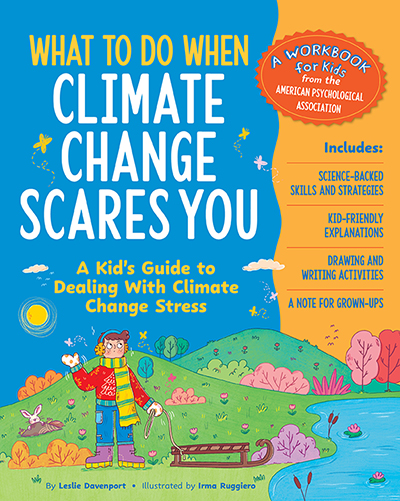 What to Do When Climate Change Scares You: A Kid's Guide to Dealing with Climate Change Stress by Leslie Davenport, illus. by Irma Ruggiero (Magination Press, $16.99, ages 6-12, 9781433844829, September 3, 2024)
What to Do When Climate Change Scares You: A Kid's Guide to Dealing with Climate Change Stress by Leslie Davenport, illus. by Irma Ruggiero (Magination Press, $16.99, ages 6-12, 9781433844829, September 3, 2024)
What to Do When Climate Change Scares You offers age-appropriate coping tools for six- to 12-year-olds experiencing eco-anxiety. This workbook uses evidence-based activities and practices along with approachable illustrations and language to distill this complicated topic for young minds. In addition to identifying and working with eco-emotions, kids are encouraged to find ways to participate in creating a healthier world without placing the burden on their young shoulders.
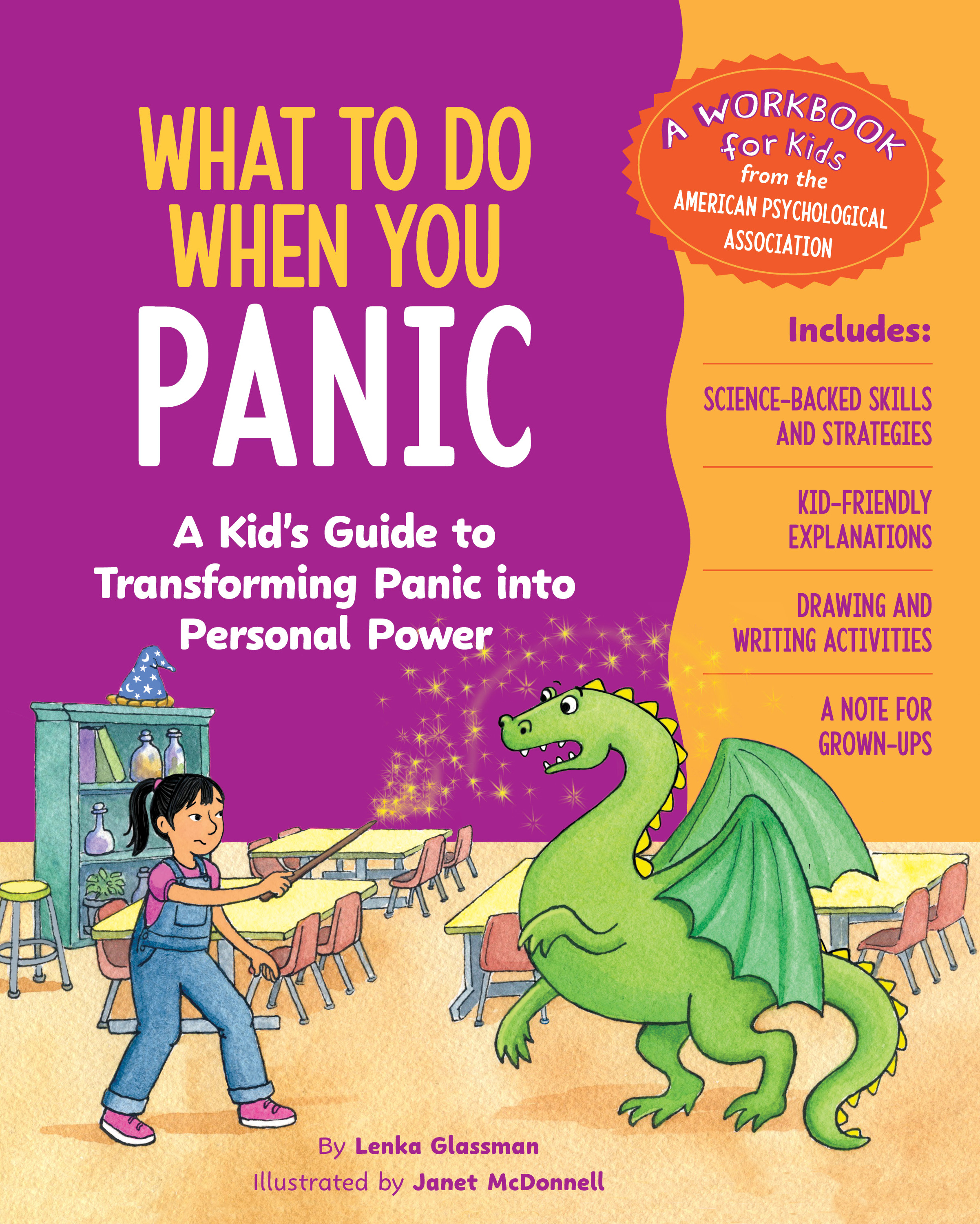 What to Do When You Panic by Lenka Glassman, illus. by Janet McDonnell (Magination Press, $16.99, ages 6-12, 9781433844843, February 4, 2025)
What to Do When You Panic by Lenka Glassman, illus. by Janet McDonnell (Magination Press, $16.99, ages 6-12, 9781433844843, February 4, 2025)
This interactive self-help book uses scientifically proven techniques to help children when they are overwhelmed with panicky feelings and stress. The book, utilizing approaches preferred by many psychologists and school counselors, guides kids through a strategy for calming panic and settling feelings of spiraling fear and anxiety. Relatable examples, lively illustrations, and step-by-step instructions are all based on cognitive-behavioral techniques, making this an excellent resource for empowering children to help themselves.
Upcoming New Editions of What-to-Do Guides for Kids
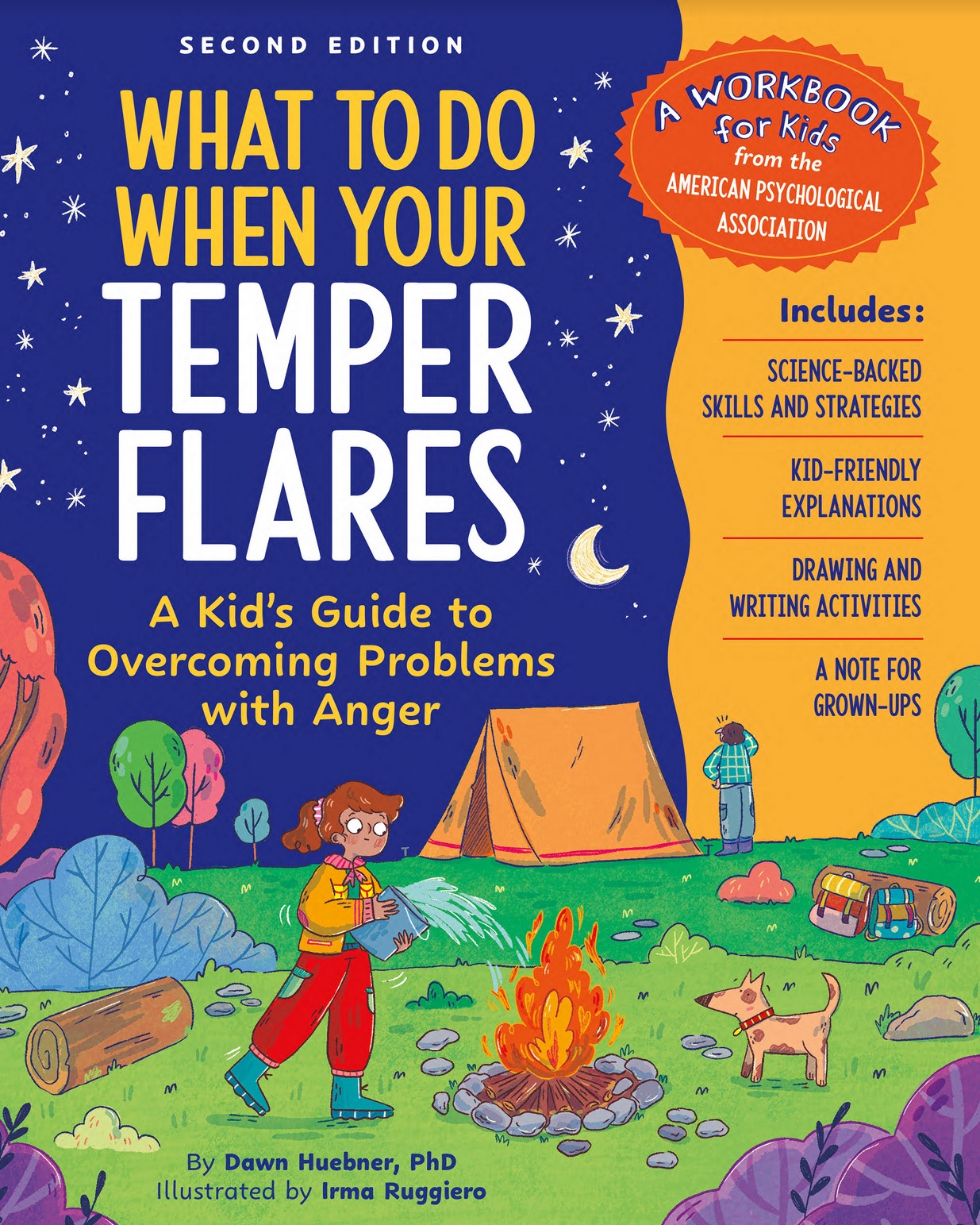 What to Do When Your Temper Flares: A Kids Guide to Overcoming Problems with Anger: Second Edition by Dawn Huebner, illus. by Irma Ruggiero (Magination Press, $16.99, ages 6-12, 9781433845147, January 7, 2025)
What to Do When Your Temper Flares: A Kids Guide to Overcoming Problems with Anger: Second Edition by Dawn Huebner, illus. by Irma Ruggiero (Magination Press, $16.99, ages 6-12, 9781433845147, January 7, 2025)
What to Do When Your Temper Flares, Second Edition, guides children and caregivers through the cognitive-behavioral techniques used in the treatment of anger. With engaging examples, lively illustrations, and step-by-step instructions, this updated edition of the award-winning book teaches children a set of "anger dousing" methods aimed at cooling angry thoughts and controlling angry actions, resulting in calmer, more effective kids. This interactive self-help book remains the complete resource for educating, motivating, and empowering children to work toward change.
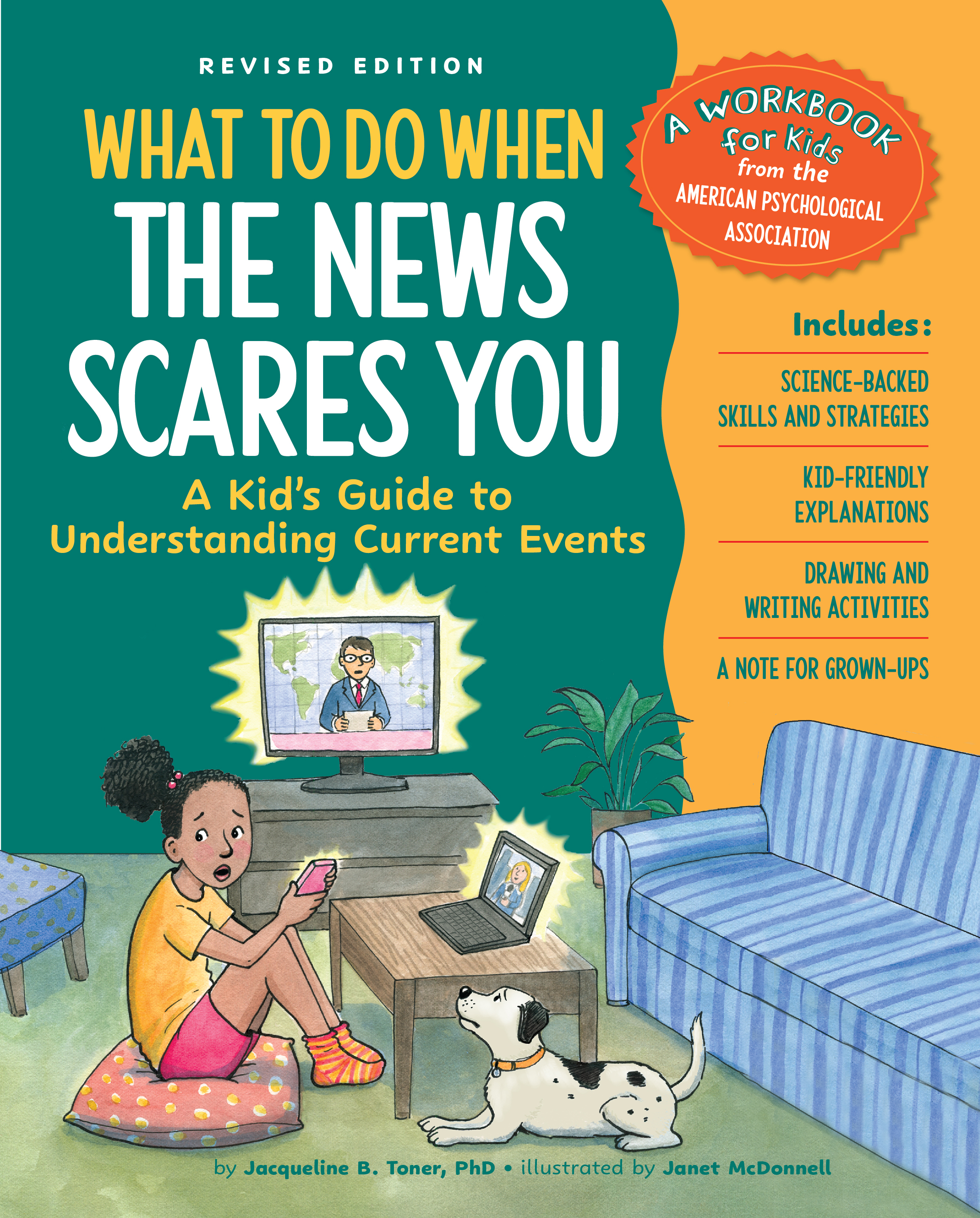 What to Do When the News Scares You: A Kid's Guide to Understanding Current Events by Jacqueline B. Toner, illus. by Janet McDonnell (Magination Press, $16.99, ages 6-12, 9781433845239, April 2, 2025)
What to Do When the News Scares You: A Kid's Guide to Understanding Current Events by Jacqueline B. Toner, illus. by Janet McDonnell (Magination Press, $16.99, ages 6-12, 9781433845239, April 2, 2025)
Children are often bombarded with information about the world around them and events that include violence, extreme weather, disease outbreak, or discussions of more dispersed threats that can be frightening and overwhelming. While scary news is an inevitable part of life, this book can support and guide efforts to help the headlines seem a bit more manageable for young people. In the updated version of 2021's What to Do When the News Scares You, caretakers and children can read and complete activities that will help put overwhelming events into perspective, provide context, and remind children--and their caretakers--that reporters often make efforts to add excitement to a story, making threats seem more imminent, universal, and extreme.
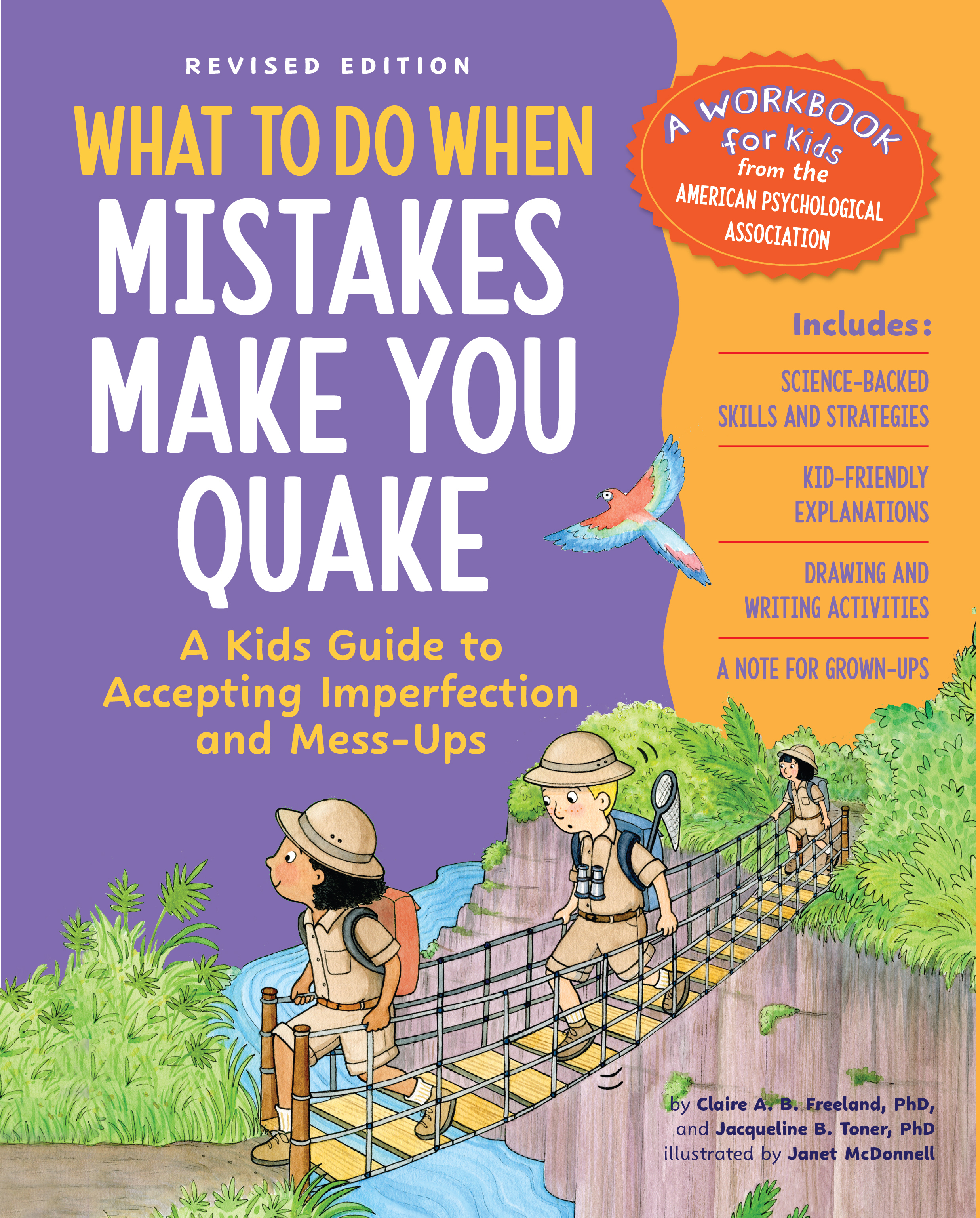 What to Do When Mistakes Make You Quake: A Kid's Guide to Accepting Imperfection by Claire A.B. Freeland and Jacqueline B. Toner, illus. by Janet McDonnell (Magination Press, $16.99, ages 6-12, 9781433845277, June 3, 2025)
What to Do When Mistakes Make You Quake: A Kid's Guide to Accepting Imperfection by Claire A.B. Freeland and Jacqueline B. Toner, illus. by Janet McDonnell (Magination Press, $16.99, ages 6-12, 9781433845277, June 3, 2025)
If children--or their caretakers--have trouble accepting mistakes, try to be right all the time, or worry about being less than the best, What to Do When Mistakes Make You Quake may be the perfect read. While it's natural to be afraid of making mistakes, some kids are so afraid of making mistakes that they may hold back from challenges or blame others for their own errors. This updated version of the 2015 book is an interactive resource that can guide kids through the emotions underlying a fear of making mistakes using strategies and techniques based on cognitive-behavioral principles. It reminds adult readers to emphasize effort more than outcome, model self-acceptance and loss gracefully, demonstrate a sense of humor, and to always comment on why you're okay when you make a mistake.
Rediscover
Rediscover: Steve Silberman
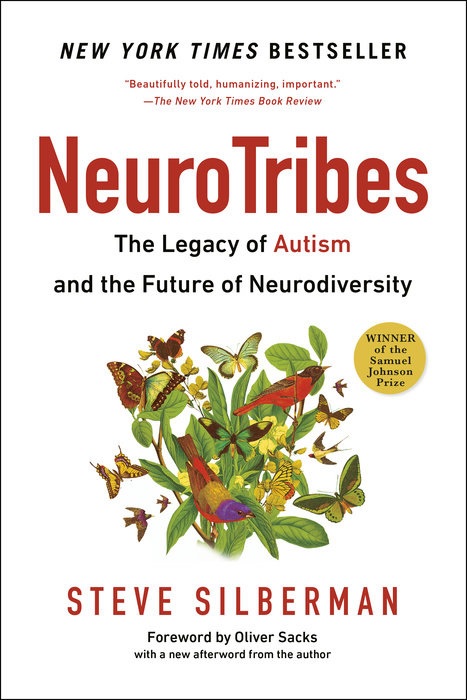 Steve Silberman, a science journalist "whose award-winning book about the history of autism helped broaden the public's understanding of that often-misunderstood condition and those diagnosed with it," died August 29 at age 66, the New York Times reported. In 2000, Silberman, who was then a contributing editor at Wired magazine, began an investigation that would become his 2001 Wired article "The Geek Syndrome," in which he explored the increase in autism diagnoses in California; the early research into autism by Hans Asperger, a pediatrician in Vienna, and Leo Kanner, a child psychiatrist at Johns Hopkins Hospital in Baltimore; and the range of behaviors exhibited by autistic children.
Steve Silberman, a science journalist "whose award-winning book about the history of autism helped broaden the public's understanding of that often-misunderstood condition and those diagnosed with it," died August 29 at age 66, the New York Times reported. In 2000, Silberman, who was then a contributing editor at Wired magazine, began an investigation that would become his 2001 Wired article "The Geek Syndrome," in which he explored the increase in autism diagnoses in California; the early research into autism by Hans Asperger, a pediatrician in Vienna, and Leo Kanner, a child psychiatrist at Johns Hopkins Hospital in Baltimore; and the range of behaviors exhibited by autistic children.
Although he received many e-mails from autistic people and parents, as well as requests from literary agents, to expand the article into a book, he wasn't ready yet. The Times noted that it took nearly eight years--and prodding from his friend Oliver Sacks, the neurologist and author, among others--for him to begin NeuroTribes: The Legacy of Autism and the Future of Neurodiversity (2015). The book won the Samuel Johnson (now the Baillie Gifford) Prize for Nonfiction.
One of those children featured in the book was Leo Rosa, with whom Silberman spent significant time. In an interview, Leo's mother, Shannon Des Roches Rosa, a founder of the news website Thinking Person's Guide to Autism, said, "Steve changed the conversation around autism. He really popularized the idea that autistic people aren't broken and are part of the tapestry of humanity. It's a unique condition that's always been here, and we need to do better by autistic people than punishing them for having different brains."
Ari Ne'eman, founder and former executive director of the Autistic Self Advocacy Network, noted that Silberman "told our story in a way that hasn't been done in the past by placing autistic people at the center. He spent time with autistic people at conferences and gatherings. He had a real respect for autistic culture."
Silberman's encyclopedic knowledge of the Grateful Dead brought him into the band's inner circle of archivists, leading him to write liner notes for several of albums, along with the book Skeleton Key: A Dictionary for Deadheads (1994) with David Shenk.
At his death, Silberman had been working on a book about breakthroughs in the treatment of cystic fibrosis that, under the title The Taste of Salt, was to be published in 2026. Lucia Watson, v-p and editor-in-chief of the PRH imprint Avery, said the manuscript was incomplete and the book would not be published, but the partial manuscript "showcased Steve's incredible ability to weave together immersive storytelling and fascinating science."
Clare Drysdale, Atlantic Books associate publisher, told the Bookseller: "Steve's deep empathy shone through on every page of NeuroTribes. He was endlessly curious and very careful not to overstep in his unusual role as a neurotypical spokesperson for the autistic community, a position he regarded as an absolute privilege. He was unbelievably generous, forever offering blurbs to help less-established writers on their way, and an absolute delight to work with. We are all diminished by his loss and send our deepest sympathies to his family." NeuroTribes is available in paperback from Avery.


